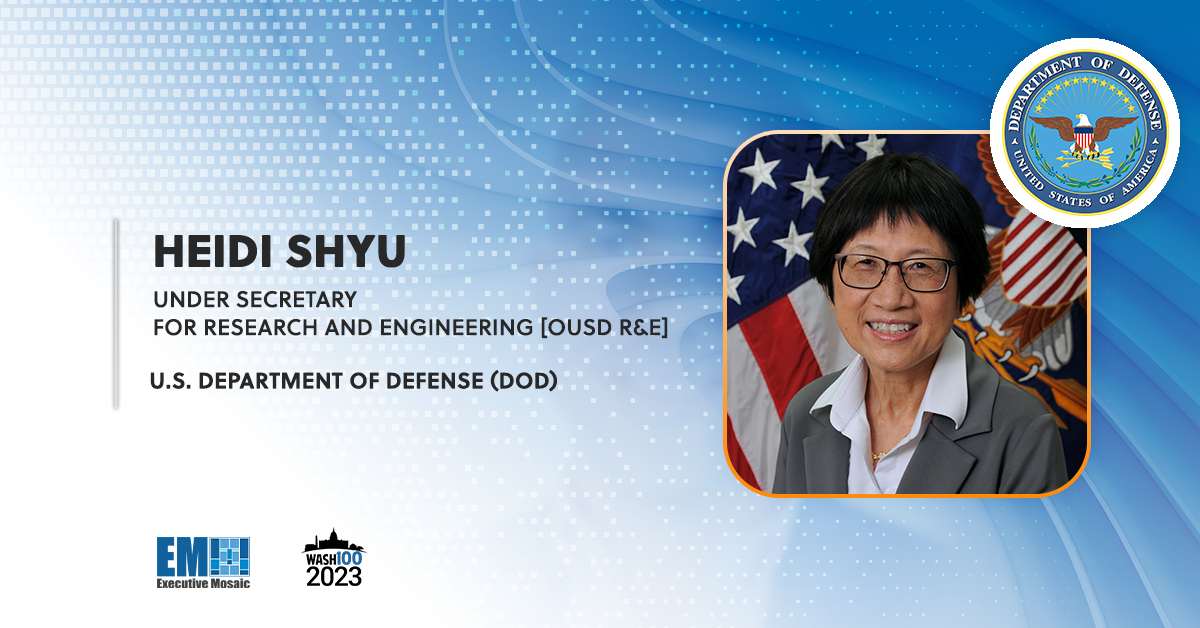Since its release in October 2022, the National Defense Strategy has guided the Department of Defense as it navigates today’s global competition landscape. A core objective within the strategy is to build enduring advantages, and the NDS notes investments in technology as a key part in achieving this goal.
Leading DOD R&D efforts is Under Secretary of Defense for Research and Engineering Heidi Shyu, who said the department “must leverage emerging technologies” to execute the NDS.

Shyu, a three-time Wash100 Award recipient, will be speaking at the Potomac Officers Club’s 10th Annual Defense R&D Summit on Jan. 31, 2024. During the event, you will have the opportunity to hear her insights on the current defense R&D environment. She will be joined by numerous other defense R&D leaders from both government and industry, who will come together to discuss the top challenges and priorities in defense R&D.
Click here to learn more, and click here to register for the event.
In May, the DOD further solidified its R&D goals with the release of the National Defense Science and Technology Strategy. It is built around three objectives: focusing on the joint mission; creating and fielding capabilities at speed and scale; and ensuring the foundations for research and development.
“This strategy helps us make carefully crafted decisions that bolster our comparative advantages rather than engaging in wasteful technology races,” Shyu said.
She emphasized the plan’s focus on asymmetric capabilities with long-term national security benefits. The strategy states that the DOD will “accelerate the process of turning ideas into capabilities by creating new pathways to rapidly experiment with asymmetric capabilities and deliver new technologies at scale.” Part of this is bridging the “valley of death,” which refers to the gap between development and deployment that many technologies are unable to cross.
The NDSTS also highlights the importance of infrastructure and workforce in creating long-term technology success for the DOD. Improving these components of the defense technology ecosystem includes laboratory upgrades, strengthening partnerships, continuous prototyping and several other efforts.
In line with the NDS and department initiatives like Joint All-Domain Command and Control, which aims to increase connectivity between the various military services, the NDSTS prioritizes joint operations.
Shortly before the NDSTS was made public, Shyu said that converting joint warfighting concepts into tangible capabilities is a primary aim for the DOD. According to Shyu, the services have been using modeling and simulation as well as rapid prototyping to speed up capability development in the Rapid Defense Experimentation Reserve, which she described as “a collaboration between the military services, combatant commands, industry and coalition partners with the aim of discovering new and innovative warfighting capabilities.”
Don’t miss your chance to hear more of Shyu’s thoughts on today’s defense R&D initiatives! Click here to secure your spot at the Potomac Officers Club’s 10th Annual Defense R&D Summit.
















